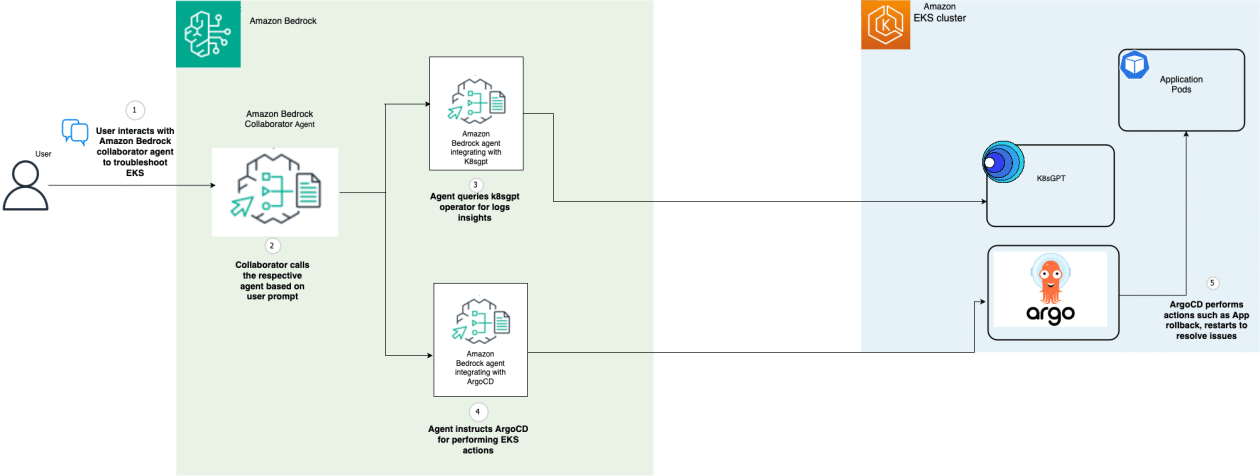In a context where Amazon Elastic Kubernetes Service (EKS) has become increasingly popular, platform administrators face significant challenges in managing multi-tenant clusters. Troubleshooting pods, resource constraints, and proper configuration are time-consuming tasks that prevent teams from focusing on innovation. To address these issues, there is a need to integrate generative artificial intelligence into Kubernetes operations.
During the recent AWS re:Invent 2024 event, Amazon introduced a new multi-agent collaboration capability through Amazon Bedrock, which is currently in preview. This innovation enables the development and management of multiple artificial intelligence agents working together to tackle complex tasks that require specific skills. In the realm of troubleshooting EKS clusters, this functionality promises to streamline management by allowing a workflow management agent to connect with other agents that respond to observability signals and a continuous integration and delivery pipeline (CI/CD).
The proposal is to orchestrate various Amazon Bedrock agents to create an effective troubleshooting system for EKS. The collaboration between specialized agents, such as K8sGPT for analysis and ArgoCD for deployment, aims to generate comprehensive automation that identifies, analyzes, and resolves cluster issues with minimal human intervention.
The architecture of this solution is complex and consists of several key components. A collaborating agent directs the workflow and helps maintain context, while K8sGPT evaluates cluster events for security and performance issues. ArgoCD, on the other hand, handles remediation using a GitOps methodology. This integration promotes automatic detection of problems and efficient application of solutions, optimizing infrastructure and creating a self-healing environment.
To effectively implement the solution, it is necessary to prepare the EKS cluster, which involves configuring both K8sGPT and ArgoCD. Deploying the K8sGPT operator and the ArgoCD controller in the cluster enables AI-driven analysis and improves continuous application delivery. Using Amazon Bedrock as a backend provides the language model needed to provide remediation recommendations for detected issues.
As the solution is implemented, it will be crucial to establish necessary permissions for K8sGPT to access the cluster. This will be achieved through Amazon EKS access policies, ensuring the agent operates under the principle of least privilege while monitoring and analyzing cluster resources.
The system has been tested in multiple scenarios, demonstrating its effectiveness in coordinating interactions between agents and resolving application failure alerts, improving resource management, and proactively maintaining application health. All of this leads to reduced downtime and more efficient resource management in Kubernetes environments.
In summary, the integration of multiple Amazon Bedrock agents for automated issue resolution in Amazon EKS not only simplifies operations within Kubernetes, but also paves the way for a future where AI-driven automation will be key. With the continuous evolution of these tools, they are expected to become even more sophisticated, adapting to the needs of organizations looking to maximize efficiency and innovation in their cloud infrastructures.
Referrer: MiMub in Spanish











